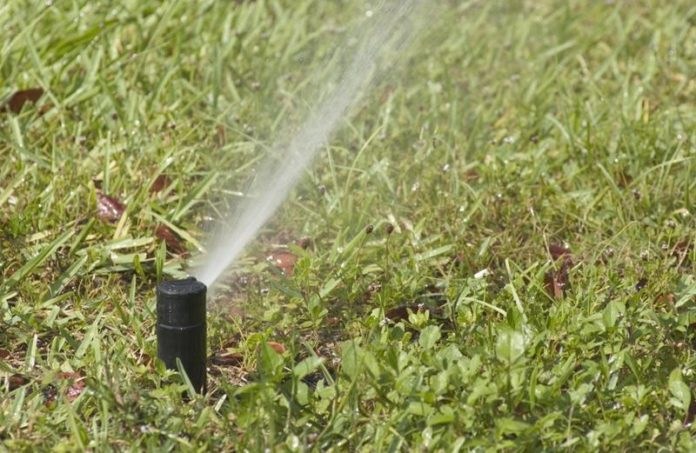
Before you go water your lawn and garden to pass the quarantine days, make sure you check what time and day it is. Due to hot weather and drought conditions, the South Florida Water Management District (SFWMD) has set strict guidelines for landscape irrigation.
The water conservation measures urge property owners to follow additional steps beyond the year-round lawn watering restrictions, including:
- Water lawns only two days per week between 7 p.m. and 7 a.m.
- Apply no more than 3/4 -inch to 1 inch of water per week on lawns and landscapes and only as needed to supplement rainfall.
SFWMD’s order makes an exception for plants watered using low volume irrigation, micro-irrigation, low volume hand watering methods, and rain barrels, cisterns, or other similar rain harvesting devices and irrigation using treated reclaimed water. Those are not restricted by watering days or times.
The restrictions are a common tactic used to conserve water.
Every year, South Florida goes into “drought” during the dry season, said Chris Rothwell, a meteorologist with the National Weather Service in Key West. How bad it gets depends on “regional to sub-planetary scale phenomena such as El Nino and La Nina, Arctic Oscillation, North Atlantic Oscillation,” he said.
In hotter, drier years, stricter limits are necessary. Rothwell noted that 2020 is the 15th driest four-month start to a calendar year (January through April) since Key West started keeping records in 1871. That’s the 15th driest out of 149 years of data.
“The United States Drought Monitor currently classifies portions of South Florida as ‘Severe Drought,’” Rothwell said. Tom Walker, executive director of the Florida Keys Aqueduct Authority (FKAA), added that portions of many counties, including Monroe, are “Abnormally Dry.”
FKAA is the potable water supplier for the Keys. More than 90 percent of FKAA’s water supply source comes from the Biscayne Aquifer in southern Miami-Dade County, Walker said, which is fed by Lake Okeechobee. FKAA also uses reverse osmosis treatments to convert salty brackish and seawater from the Floridian Aquifer, the Atlantic and the Gulf of Mexico into fresh drinking water, Walker said.
“In emergency situations, FKAA also has two seawater plants, one in Marathon and one in Stock Island, to supply additional water,” SFWMD’s Mark Elsner explained.
The current guidelines are published and implemented through public information and education, Walker said. “Significant abuse by over-irrigating can be handled through code enforcement,” he added. “Code enforcement has latitude to charge fees that match the level of abuse. We currently do not shut off supply for excessive use.”
“If the drought continues, the SFWMD will need to implement more stringent restrictions,” Walker said, “from 2 days/week to 1 day/week and possibly time limitations.” Elsner said SFWMD would do so “to curb demands further and prevent serious harm to the water resources.”
Elsner alluded to potential saltwater intrusion into aquifers if groundwater levels drop too low. He said, “If saltwater intrudes into the aquifer, it is difficult to push it back eastward, and it could take years, if at all. Water shortage restrictions are used to minimize the potential for this occurring.”
Walker was quick to add that, while current conditions are “of concern” and create a “need for action,” we’ve experienced much worse even within the last 20 years.
“The current dry spell has been relatively short-lived and the wet season typically begins sometime in May,” said SFWMD lead meteorologist Eric Swartz. “So the combination of our recent rains and water conservation measures should enable South Florida to reach the end of the current dry season without having its water supply threatened.
“The long-term question will be to see how much rain the coming wet season produces,” he added. “If the wet season as a whole underperforms, we could find ourselves in a much more significant water shortage situation next spring.”
The SFWMD order does not restrict residents from following CDC guidelines to prevent the spread of coronavirus, such as frequent hand washing. Hand washing uses very little water and is encouraged, the order said. “This order does not focus on water used inside a home,” SFWMD’s Lawrence Glenn added, saying residents do not need to worry about using more resources during the shutdown period to wash hands, clothes, dishes, etc.
Residents can also conserve water by following SFWMD’s simple water conservation tips, including:
- Ensuring rain sensors are operating properly. Irrigating during or after significant rainfall is a major cause of outdoor water waste and can cost you money.
- Replacing aerators in kitchen and bathroom sinks with models rated for 1.5 gallons per minute or less.
- Switching to WaterSense or other high-efficiency indoor showerheads, bathroom faucets and toilets, to save hundreds of gallons of water a week.
- Implement Florida-friendly landscaping and principles by using low maintenance plants and environmentally sustainable practices.
- Consider updating appliances like dishwashers and washing machines to Energy Star-rated products.
- Using the shortest clothes washing cycle for lightly soiled loads; normal and permanent press wash cycles use more water.
- Thawing frozen food in the refrigerator or microwave, not under running water.
- Scraping your dishes before loading in the dishwasher without rinsing.



















